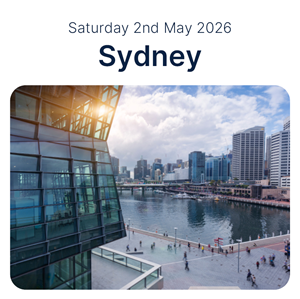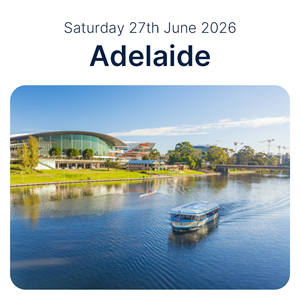Articles / Assessing fitness to drive for seizures and epilepsy

0 hours
These are activities that expand general practice knowledge, skills and attitudes, related to your scope of practice.
0.5 hours
These are activities that require reflection on feedback about your work.
0 hours
These are activities that use your work data to ensure quality results.
These are activities that expand general practice knowledge, skills and attitudes, related to your scope of practice.
These are activities that require reflection on feedback about your work.
These are activities that use your work data to ensure quality results.
The ability to drive is so crucial to employment, socialisation, and self-esteem that people with epilepsy list it as a leading concern, ahead of seizures and even sudden death.
However, given the risk to their own safety and that of the community, assessing fitness to drive involves a tricky balance — especially because impairment is intermittent and you’re often relying on patient reporting, rather than objective facts, says neurologist Professor Ernest Somerville, Chair of the Driving Committee for the Australian and New Zealand Association of Neurologists.
Guidance for assessing fitness to drive in people with seizures and epilepsy was updated in 2022. Here are some of the key things to know.
The tricky thing is that seizures are usually rare — but the consequences can be disastrous if one happens while driving.
“Somebody with one seizure a month has quite bad epilepsy, even though that seizure may only last about a minute. So, 99.99% of the time, that person’s perfectly fit to drive,” Professor Somerville says.
If a seizure occurs when driving, there’s at least a 50% chance of an accident, and it’s often at high speed.
“That’s probably because when you drive, you have your foot resting on the accelerator. So when the leg goes into a tonic contraction, as it does with a tonic-clonic seizure and with some focal seizures, the foot goes down on the accelerator and the car accelerates,” Professor Somerville explains.
Crashes are also more severe because the driver is unconscious, and therefore unable to take evasive action such as braking or swerving, he adds.
For these reasons, some countries such as India and China ban anyone who’s had a seizure from ever driving again. But like most Western countries, Australia takes a more nuanced approach, allowing people to drive if the risk is “acceptably low.”
Many factors can increase crash risk, including timing, sleep deprivation, age and alcohol use.
In Australia, anything less than double the crash risk is considered acceptable. That’s the average increased risk of driving at the legal alcohol limit, or while sleep deprived — and the standard that’s applied to people with epilepsy too, Professor Somerville says.
The standards are based on the premise that a seizure risk of less than 30% in the next 12 months equates to less than double the relative risk of a crash, he explains.
“This risk is comparable to the effect of 17 to 19 hours of sleep deprivation on the rate of driving accidents.”
Standards for commercial driving are much stricter because the extra time spent behind the wheel increases the likelihood that a seizure may occur while driving and vehicles are often much larger.
• ‘Private drivers,’ including learners, must go at least 12-months without a seizure, and comply with medical advice.
• Commercial drivers must go at least 10 years without a seizure, have a non-epileptiform EEG and must follow medical advice.
• Both private and commercial drivers must be reviewed by their doctor annually.
There are exceptions to these defaults under circumstances where the risk of another seizure is lower.
Private drivers may be eligible to return to driving earlier in the following cases:
• They have had six months of treatment after a first seizure
• They’ve had acute symptomatic seizures, such as seizures due to a temporary illness, such as hyponatremia, or an infection like meningitis
• Provoked seizures in a person with well-controlled epilepsy, which have been caused by a factor that can be reliably avoided (e.g. missed medication doses, certain medicines, alcohol etc)
• ‘Safe seizures,’ which are seizures that do not impair consciousness or driving ability.
• Sleep-only seizures
• Cases where an isolated seizure follows a 12-month seizure-free period
• Exceptional cases based on expert opinion (see below for more information)
The Standards outline several other requirements that someone in the above circumstances must meet to be eligible to return to driving earlier.
For example, someone with ‘safe seizures’ must not have had any other seizure type in at least two years, Professor Somerville explains.
And someone with epilepsy who has had a ‘provoked seizure’ must not have had any other type of seizure for at least 12 months.
Additionally, if someone has more than one seizure provoked by the same thing, they don’t qualify for a reduction on the default.
“An example might be a patient who forgets to take their medication,” says Professor Somerville. “If they do that once, that can be called a provoked seizure. If they do it repeatedly, they are no longer eligible for a reduction.”
In exception cases a medical specialist experienced in epilepsy management can assess the person as possibly being safe to drive (with the final decision up to the driver licensing authority).
The rule is intended for people whose risk is substantially lower than that of others to whom the particular standard applies.
“This is not an appeal mechanism for anyone to use to challenge a decision,” says Professor Somerville.
Patients cannot drive while medication doses are being reduced, nor for three months after they reach the new dose or after medication is ceased, Professor Somerville explains. “The exception is if the dose reduction is due to dose-related side effects they can continue to drive.”
People are now required to report themselves to the licensing authority after a first seizure, and be on a conditional licence for at least two years. This is because risk of recurrence after a first unprovoked seizure is around 50%.
Although patients may believe they are safe to drive during auras, evidence does not support this. A seizure is not considered ‘safe’ unless responsiveness has been tested and there has been no other seizure type for two years.
Professor Somerville also dispels the common misconception that prolonged auras give enough time to stop the vehicle before the seizure. This is not supported by evidence, and even if the vehicle can be stopped, the subsequent seizure could lead to a crash, he says.
Under the updated version of the Standards, sleep deprivation does not qualify as a provoking factor that can be reliably avoided, because it cannot be reliably avoided. In fact, the risk of further seizures following a seizure associated with sleep deprivation is only slightly less than the risk after one that is not associated with sleep deprivation.
“Doctors and patients tend to over-blame sleep deprivation for seizures,” says Professor Somerville. “There’s an optimism there that is ill-founded, that simply avoiding sleep deprivation means there won’t be any further seizures.”
Patients may provide unreliable information either inadvertently or intentionally. For example, they may be unaware of their seizures, have trouble tracking them accurately, or just be dishonest.
If the treating doctor doubts the reliability of the relevant clinical information provided by a patient, the patient is considered not fit to drive.
“If you’re uncertain, it doesn’t mean their fitness is uncertain. If you’re uncertain, they’re unfit,” Professor Somerville stresses.
In cases where information has been concealed, he cautions against using video EEG evidence that a person has not had a seizure after a week to confirm fitness to drive. “All it’s really showing is that the seizure frequency is less than once a week, which is not the same as being safe to drive,” he says.
Patients have a legal responsibility to notify the driver licensing authority if they have any chronic or long-term condition that could interfere with safety to drive.
“The problem is most drivers don’t know about it,” says Professor Somerville. “They also should report the history accurately,” he adds.
Doctors have a responsibility to advise patients of this requirement and explain how their medical condition impacts their ability to drive safely.
If a patient continues to drive when told they are unsafe, doctors may have a duty to notify the state or territory licensing authority. Under South Australian and Northern Territory laws it is mandatory for health professionals to notify the licensing authority of all drivers with epilepsy.
Professor Somerville notes that doctors are protected from civil or criminal liability if reporting is made in good faith. It can be worth discussing this with your medical indemnity provider.
Assessing fitness to drive can be difficult for the doctor-patient relationship at times, but Professor Somerville says safety must take priority.
“You can empathise with your patient but explain the requirements to assess them appropriately. Patients should understand you are not the decision maker,” he says, noting that the driver licensing authority is responsible for licensing decisions
“Do not yield to pressure,” he says. “You can refer the patient to a neurologist if you want to avoid conflict with the patient.”
This is useful in complex or unclear cases.
For patients that continue to drive against advice, it may help to appeal to their sense of responsibility to their family and community.
“Remind them of potential consequences if the person is driving illegally. Their car insurance may not cover any crash that occurs,” Professor Somerville says. “They may also be subject to criminal prosecution and potentially jail time.”
He suggests offering to write to the licensing authority on the individual’s behalf, and to check if they are eligible for the taxi discount scheme or a Centrelink mobility allowance payment.
You can read the full Austroads Assessing Fitness to Drive standards for seizures and epilepsy here.
Note: This article was first published on 19 July 2024. It was last updated and reviewed by Professor Ernest Somerville in August 2025.
Based on this educational activity, complete these learning modules to gain additional CPD.

Allergen Introduction – Practical Tips for GPs

Obstructive Sleep Apnoea

Very overestimated
Moderately/slightly overestimated
Quite accurate
Moderately/slightly underestimated
Very underestimated
Listen to expert interviews.
Click to open in a new tab
Browse the latest articles from Healthed.
Once you confirm you’ve read this article you can complete a Patient Case Review to earn 0.5 hours CPD in the Reviewing Performance (RP) category.
Select ‘Confirm & learn‘ when you have read this article in its entirety and you will be taken to begin your Patient Case Review.





